This post contains affiliate links. We earn commissions if you purchase products from retailers after clicking on a link from our site. As an Amazon Associate, we earn from qualifying purchases.
Okay, so you want to learn guitar, or perhaps buy your second guitar. It can be overwhelming! One specific question you might have is what’s the advantage of a cutaway?
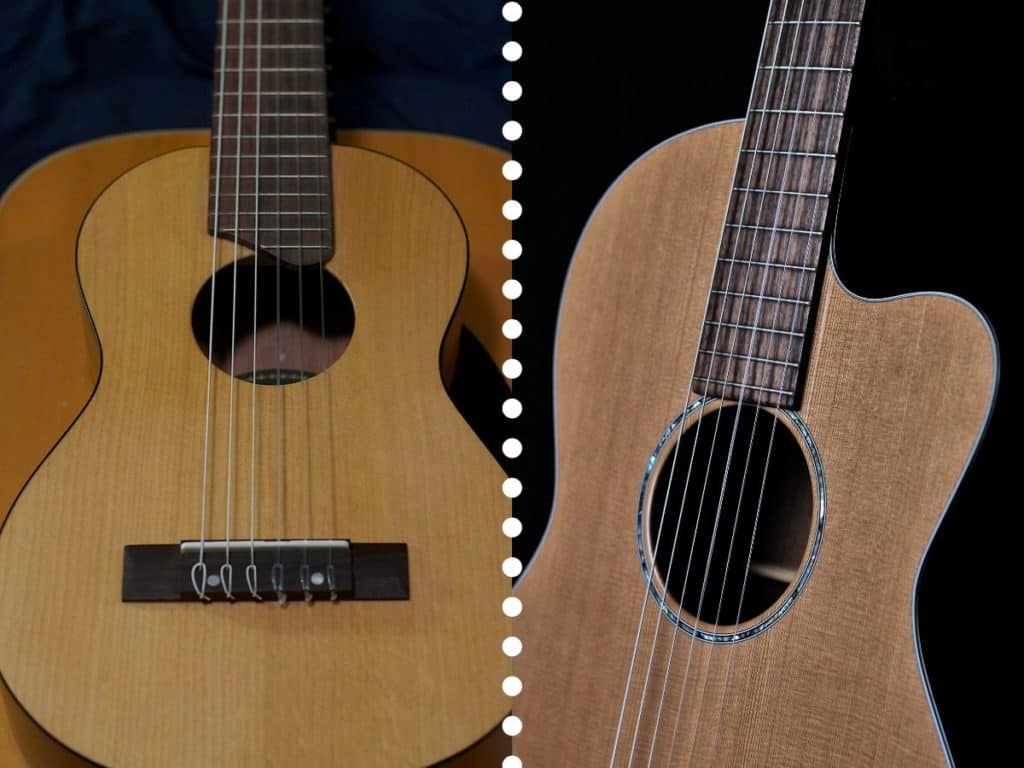
By the way, looking for recording equipment and musical instruments? Check out Sweetwater.com for microphones, monitors, audio interface or any other recording gear that you could ever need. (Affiliate Link)
By the way, looking for a guitar? Check out GuitarCenter.com for acoustic, electric, or classical guitars as well as all the guitar gear you could ever need. (Affiliate Link)
Since all electric guitars are designed with cutaways, the primary benefit for cutaways in acoustic guitars is that they provide the player with easier access to the higher frets. The biggest downside is that cutaways interrupt the design of an acoustic guitar which means less body to resonate, affecting the sound slightly.
So, there’s lots of questions that come from this: why would you want access to the higher frets? How much does the cutaway really affect the sound? What About Double Cutaways? Let’s dive in so we can figure all this out.
What Is a Cutaway?
Before we begin I feel like it makes sense to clarify what a cutaway is exactly.
A cutaway is a concave recess in the body of the guitar located adjacent to the neck of the guitar.
Here is an example of an acoustic guitar without a cutaway:
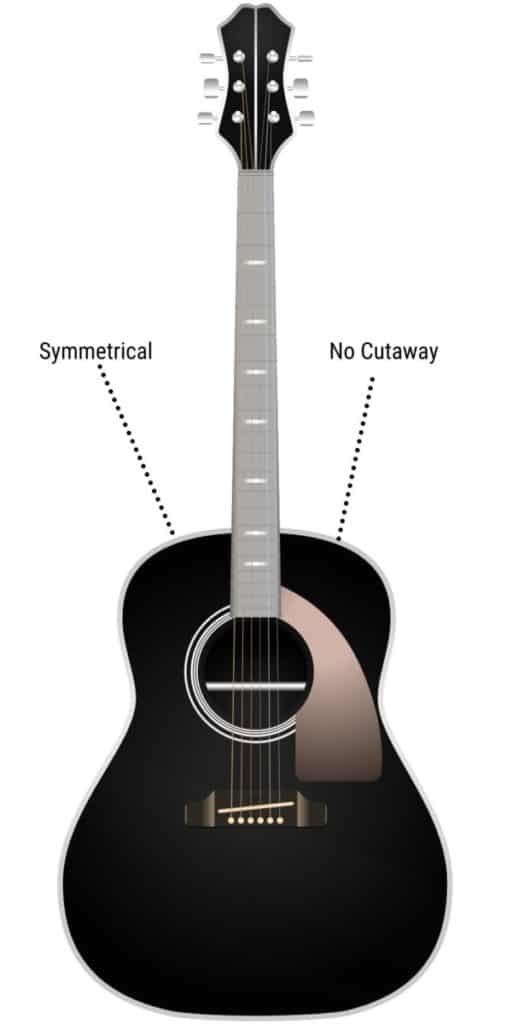
And here is an example of an acoustic guitar with a cutaway:
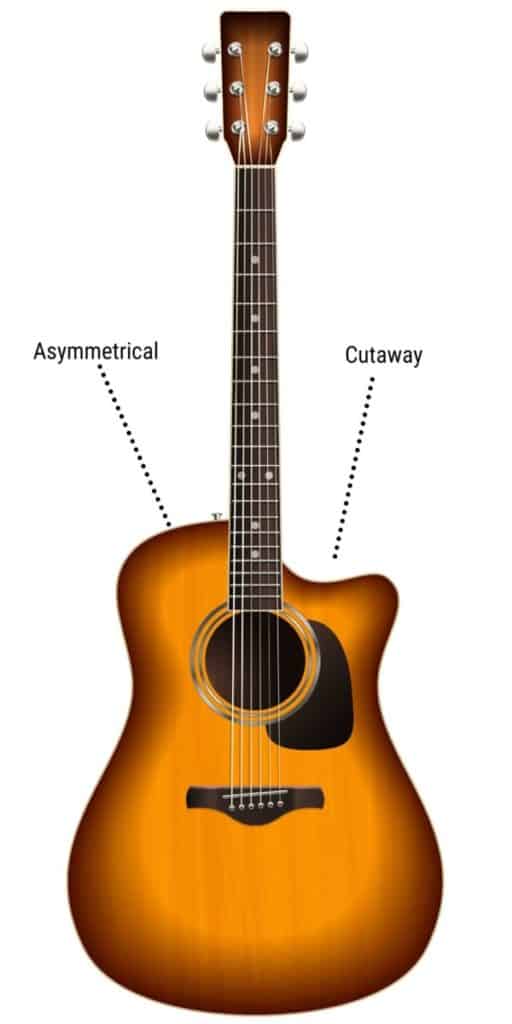
Pros and Cons of Having a Cutaway
So… that’s what a cutaway looks like, but why would you want to get a guitar with a cutaway?
Advantages of Having a Cutaway
The biggest reason for having a cutaway is so the player can actually play the top frets of the guitar.
It is, I suppose, possible to play the top frets without a cutaway, but it’s extremely difficult. Your hand isn’t able to get any leverage behind the neck of the guitar. Effectively, any fret that’s covered by the body of the guitar is almost decoration except a few spare notes here and there.
So, a summary of the advantages are:
- Gives the player the ability to play past the 14th fret of the guitar
- If weight is a concern, a cutaway is slightly lighter: This is not a huge advantage, but it’s arguable that the cutaway is slightly easier to handle because there is less body, especially for some players
- If you don’t like the boomy sound, a cutaway removes some of the bass: Some players actually prefer the sound of a cutaway to their full-body counterparts.
- If you use a capo, you have some more room: While being able to play above the 14th fret is awesome for someone who loves to play up and down the fretboard, it can actually be a huge benefit if you play with a capo. Some songs have capos on the 5th fret–at that point, a few more frets can make a big difference.
Disadvantages of Having a Cutaway
- The cutaway affects the sound: If you look at the section below, you can see a video where Acoustic Letter compares two guitars with as identical construction as you can find but one has a cutaway and other does not. You can even see in the frequency analysis I give below that the sound is different between the two.
- Hard to play high notes even with the cutaway: Although the cutaway makes it possible to play the high notes above the 12-14th fret, there still is one more difficulty. These strings are the farthest from the fretboard at this point, and on an acoustic guitar that means these notes are not easy to play
- Many people don’t end up playing that far: The truth is that most people who are playing acoustic don’t have a need to play above the 12-14th fret. Absolutely many, many guitar players do, but for most they don’t end up needing to. There’s lots of reasons–check out the below section to find out why.
Does a Cutaway Affect The Sound?
In this video, Acoustic Letter attempted to test just that by comparing two guitars of the same model, except one has a cutaway and one does not.
See if you can hear the difference:
As I was listening, I scrolled down to read the comments, and I didn’t notice when he was switching between the cutaway and the non-cutaway.
When you’re looking at the video while it switches, it’s really hard to not think there is a difference. When I was watching, it did seem that the non-cutaway guitar indeed had what you could only describe as a fuller sound, especially in the lower end.
Frequency Analysis
For the overly curious among you, these two guitars really do sound different from one another (it’s not just in my head).
I did a frequency analysis on both guitars in the video while he was playing open chords and this is what I found:
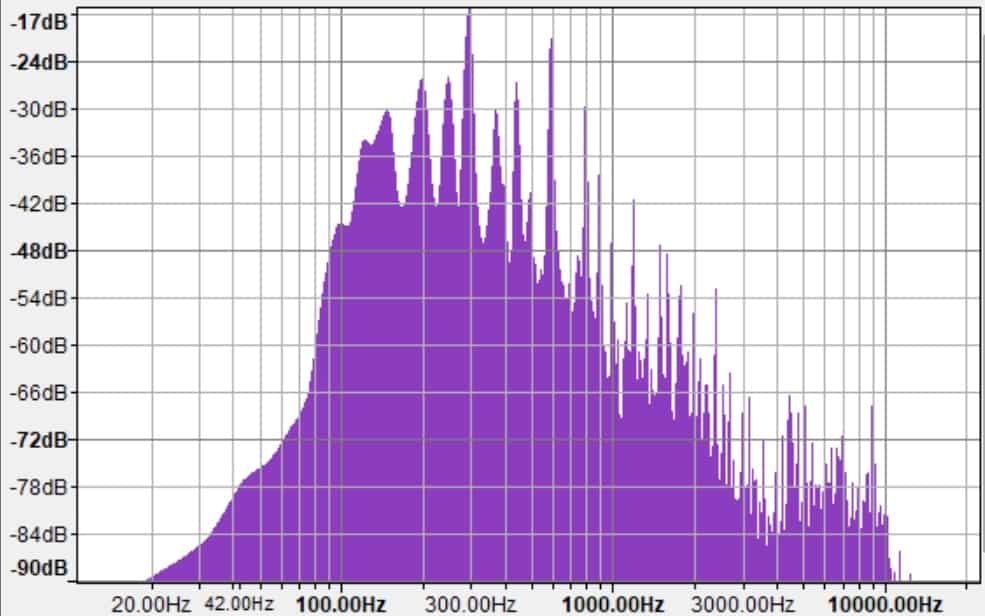
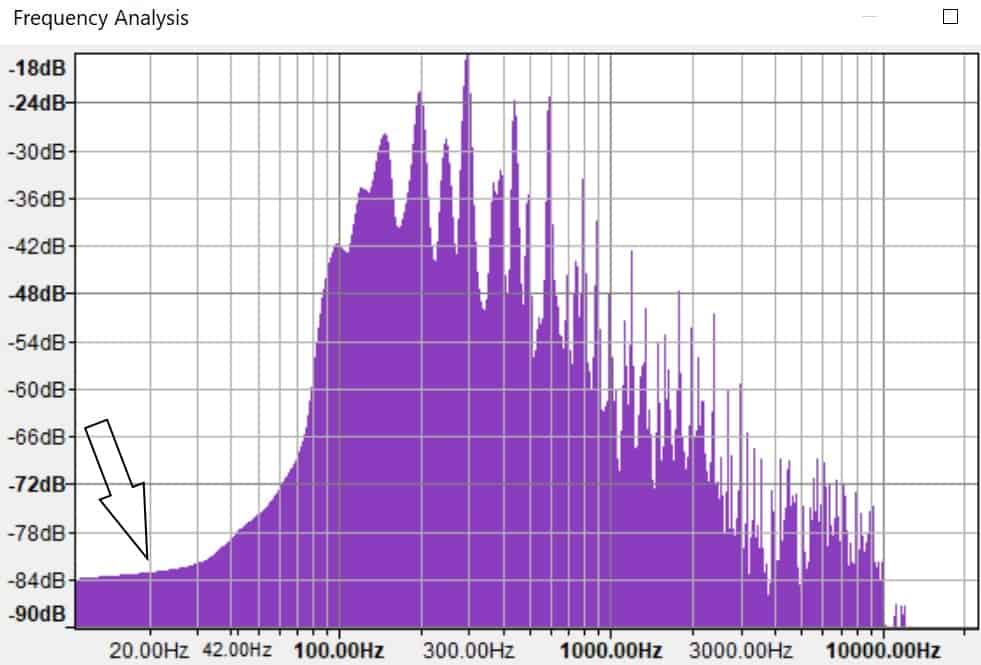
There’s a significant difference in the low-end resonance of the guitar, otherwise the frequencies look very similar.
Is this a huge difference in frequency? Not really–these frequencies are close to the edge of what humans can hear, although that bass does add to a fuller sound.
It’s also very possible that beyond the frequencies you can see in this graph the timbre of the instrument (the general sound) is different even if the frequencies look similar.
Conclusion: Whether the Sound is Different Between a Cutaway and Non-Cutaway
From listening directly and from the data I shared, the cutaway can make a significant difference in sound. I admit I didn’t notice when I was only listening and wasn’t watching. Likely, only other guitar players would notice the difference in a recording.
At this point, I entrust to you, noble guitar player, to trust your own tastes in the sound you would want to have. Take comfort in knowing that nobody can tell you that one is better than the other–they are different, but not hugely different.
Do I Need a Cutaway?
Here’s the big question–do you even need a cutaway?
The answer, of course, is it depends.
Classical guitarists often only need the 1st 5 frets of the fretboard for many songs in that genre.
Acoustic guitars are typically associated with folk, folk rock, indie, alt rock, bluegrass, and other styles of music where the guitar is mic’d not amp’d. There are thousands of songs in these genres, so of course you’re going to find exceptions, but generally much of this music is played with open chords and on frets behind the 14th fret.
Now, if you want to solo a little on your acoustic guitar–now we are in the business of discovering the range of your instrument.
Blues, Rock, Ballads, Power Ballads, Metal… and dozens of other genres often feature electric guitars. Electric guitars don’t need to resonate, and so provide full access to all the frets of the guitar. Although many of these genres feature electric guitars, that doesn’t mean that many players play acoustic guitars with these styles of music.
Furthermore, what other people play on stage doesn’t dictate what you use to play–all songs are open to you, whether you have an acoustic or an electric guitar.
Bottom line: If you are planning on chords, classical playing, or some soloing but nothing extensive, then you can get away without a cutaway.
If you are planning on learning how to solo and play up and down the fretboard, or if you are into blues, then a cutaway will be indispensable.
